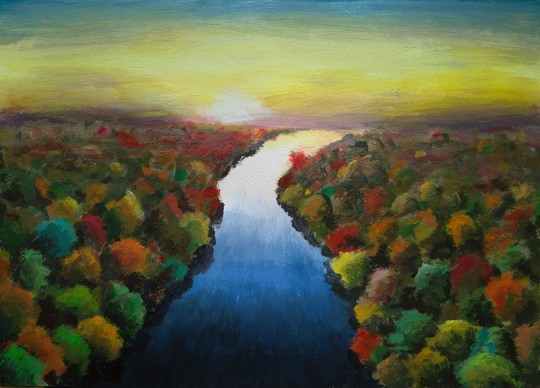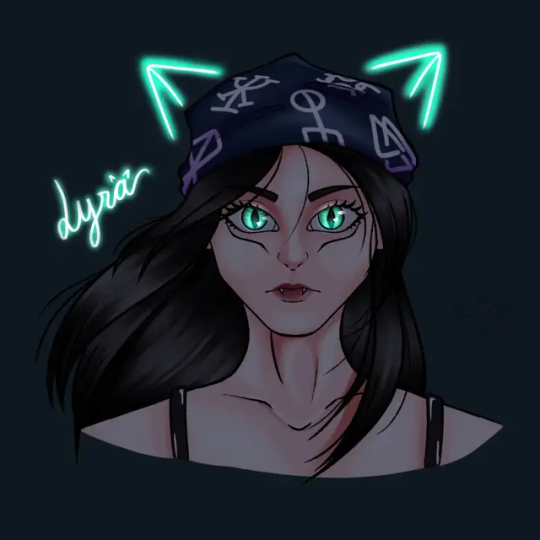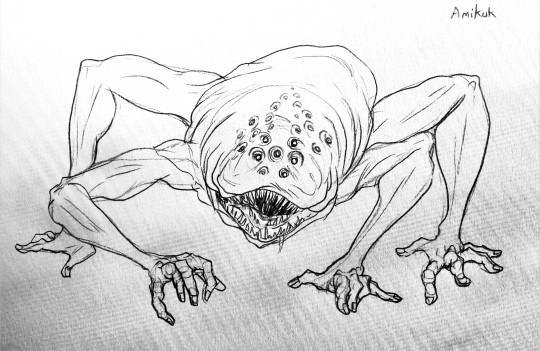#adom
Text
"Is the Berlin Interpretation still relevant?" Part 10 - Results
So, I guess I should finally explain what I'm talking about. I promise I'll stop spamming these tags now.
The Berlin Interpretation of Roguelikes is a genre definition that was made at a roguelike dev conference in 2008. It was a handful of people who were inspired by Rogue to make their own procedural death labyrinths. This was just before Spelunky. It was before The Binding of Isaac, it was before FTL, and it was before Risk of Rain. In other words, this interpretation was made right before the definition of a roguelike radically changed. Before these genre fusions, roguelikes were mostly games like NetHack and Angband, games that were directly inspired by this RPG from 1980. They were roguelikes, because they were "like Rogue."
But let's talk about what this interpretation is actually doing. It is not, in fact, a set of rigid guidelines of what features a game needs to be part of the genre. It is a set of high and low value factors, that a game may not have all of, but the more it has, the more it is, well, Rogue-like. There isn't a game that purely embodies each of these factors, because there's doesn't have to be. Even Rogue isn't fully faithful to this interpretation. It's just that if your game has enough of these factors, then it's clearly working in the same design space, and part of the broader conversation. That's all it was doing.
So is it still relevant? Well, kind of, but not really. Sure, permadeath and procedural generation are still important to people, but for it to be turn-based and grid-based aren't necessary anymore. And I guess for the later polls, either people got tired of me posting these in their tags every day, or they just don't have an opinion one way or the other, because their vote counts didn't even hit the triple digits. It seems like complexity, resource management, and exploration/discovery are still important, while non-modal gameplay and hack-and-slash aren't as much. But I hesitate to give these results the same kind of credence because of how many people from the earlier polls didn't vote on these ones.
It seems like, these days, the roguelike isn't really about its base mechanics. It's a structural genre. You can graft any base mechanics onto it, as long as you start a new run after you die, and each run is made unique by randomness. It seems pretty straightforward.
Okay, what about Mystery Dungeon?
The Mystery Dungeon games these days are mostly known for being Pokemon spinoffs, but the series goes back to the 90s with games like Shiren the Wanderer. These games are directly inspired by the original Rogue, complete with grid-based movement, item discovery, and heavy resource management. It's more "like Rogue" than a lot of modern roguelikes. But because it's structured more like a Japanese RPG, with checkpoints, persistent progression, and a full-blown story, it would probably nowadays be called a "roguelite." Even though it precedes that term by decades!
I'm honestly really surprised that Mystery Dungeon doesn't come up more in discussions about roguelikes. Like, it's a really obvious point of contention, and one that's worth talking about. But only one person in my replies actually mentioned Mystery Dungeon in their thoughts about permadeath. I suspect it's because most of the roguelikes people are invested in these days are indie PC games from the West, while Mystery Dungeon is a Japanese series on console and handheld. But I can't prove it.
Speaking of roguelites though, we have to talk about that term. I don't think that "roguelite" is an inherently elitist term, or that it's useless as a label. it clearly serves some purpose in conversation, even if I wouldn't use it myself. I don't want to prescribe my definitions of terms from on high. I want to understand how people are using these terms in daily practice.
And it seems like it comes down to two definitions. One is the Berliner standpoint. It's less common, but it sees some use. Basically, if you're not making a grid-based dungeon crawler, you're not really making a game "like Rogue," are you? Genre fusions like Risk of Rain and Slay the Spire play completely differently from the roguelikes of old, so it feels weird to just call them roguelikes. This is treating it as a mechanical genre, defining roguelikes by dungeon-crawling in the same way we define a shooter by shooting.
The other definition is a broader one, defined by two key features: procgen and permadeath. This is the most common one in modern conversations about roguelikes, because it takes it as a given that these genre fusions are what roguelikes Are. By this framing, a roguelite is any procgen game that features persistent upgrades. Something like Rogue Legacy, where your progression isn't just you as a player, but your character growing more powerful. Permadeath and procgen serve a very specific purpose in conjunction with each other, and there is a sense where either of these factors being diluted misses the entire point. But plenty of people don't put stock into the like/lite distinction, because they don't see it as mattering. No definition here is wrong, they're just all operating under different beliefs.
(sigh) Look, genre is a lot like gender. In fact, in some languages, they're the same word. It's vague, it's arbitrary, and it doesn't make sense if you squint too hard. But it's important to people, either to describe what they're doing or to understand what others are doing. There's never going to be a strict, clear definition of roguelike that perfectly covers all cases, because that's just not how genre works. Roguelikes are what we mean when we talk about roguelikes. It's very easy to poke fun at a genre label like this, but it's a lot harder to understand what it's doing, and what it means to people. That's the conversation that really matters here.
Is the Berlin Interpretation still relevant? Not as much as it used to be. But your interpretation is what's really important.
#roguelikes#game design#nethack#angband#dwarf fortress#pokemon mystery dungeon#mystery dungeon#shiren the wanderer#Tales of Maj'Eyal#ADOM#minesweeper#slay the spire#dead cells#the binding of isaac#risk of rain#hades#ftl#darkest dungeon#into the breach#spelunky#rogue legacy#vampire survivors#cult of the lamb#one step from eden#dicey dungeons#dungeon of the endless#minecraft#prey#brutal orchestra
74 notes
·
View notes
Text
math is just an ascii roguelike if you think about it. a sea of apparently arbitrary characters that is unintelligible to someone who doesn't know them but beautiful to someone who does. also some of the characters are Gremlins and they will kill you
40 notes
·
View notes
Text

Designed him for dnd!
13 notes
·
View notes
Text

10 notes
·
View notes
Text
🐈⬛ Lyra ⚔️
🐾


#art#drawing#dibujo#my draws#dibujando#arte#artedigital#fanart#artists on tumblr#dibujante#adom#adome#amor de otro mundo éxtasis#amor de otro mundo#lyra
10 notes
·
View notes
Text
I've been advised against trying to play a hurthling wizard in Ancient Domains of Mystery.
Kind of want to try it anyway.
6 notes
·
View notes
Text
Ezt hozták össze a diákszervezetek az önkori választásra.
2 notes
·
View notes
Text
Adomestic Spectrum (Adomspec)

Adomspec (Adomestic Spectrum) is an umbrella term for any Domestic attraction forms that are not strictly Allodomestic. This can include terms such as Graydomesitic, Demidomestic, and Domesticflux (Adomflux).

#eye strain#coining#mogai#liom#queer#lgbtq+#term coining#aspec#adomestic spectrum#adomspec#adomestic#adom
13 notes
·
View notes
Text


#yungblud#bhc#blackheartsclub#dominicharrison#domharrison#adam warrington#dominic harrison#adom#adam x dom
27 notes
·
View notes
Text

Ancardia's Greatest Monstrosities--The Amikuk
Classification: Monstrosity (horror)
Habitat: Icy waters, especially well-known in the Sea of Plates and the Sea of Spires.
A monstrosity most terrifying and dangerous to behold, the Amikuk is most known in Sostunian lands, believed to have first been the terrible servants of a powerful cult to Isrecht in the early 11th Age, now their numbers unleashed from any control but their own distorted ties to the Fallen God and free to breed and cause terror wherever they go. The Amikuk are semi-aquatic creatures, lurking often just at the edges of sea ice, or just beyond the end of stronger currents and sea breakers if ice is not around. Amikuk are generally averse to any individuals expressing strong will to live, strong motivation, strong passion or otherwise a strong desire to take an action—as a result, they very often target those native individuals at the river, bay, or seaside at their subsistence or creative activities—fishing, building fish traps, boat-building or repairing boats, or hunting of seals or other marine beasts.
An amikuk is roughly a meter long and a meter wide in legspan, appearing most like an oval, heavily-wrinkled blob of flesh with a many-eyed and wide-mouthed face. It has four limbs, all of which resemble humanoid arms, which gives it a wobbling, awkward yet swift spider-like gait. It is unusually strong for its size, likely owing to a feature of its musculature that includes a number of rigid bony struts protruding from its pectoral, trapezius, tricep and bicep tendons which enable more muscle fiber connections than in a normal animal and thus greatest muscular strength. However, the monstrous creatures is noted by Sostunian warriors and rangers to have a fairly low endurance, and if fought off aggressively from an area for longer than a half hour will retreat and not return for long periods. This generally renders all permanent and semi-permanent summer fishing and winter whaling settlements relatively safe from amikuk attack within about a quarter mile. It is not currently known how amikuk reproduce their numbers—though some theories by leading mages on the subject include the possibility of budding, a froglike reproduction in the shallow cold seas they inhabit, or a viviparous emission of several parthenogenic close offspring at a time. In any case, amikuk encounters are sporadic and rare in this day and age.
#ancardia#ancardian homebrew#bestiary#mixed media#creatures#Ancient Domains of Mystery#ADOM#Dnd-like#monstrosity#Amikuk#A-Mi-Kuk#Inuit mythology
11 notes
·
View notes
Text
"Is the Berlin Interpretation still relevant?" Part 2 - Permadeath
#roguelikes#game design#nethack#angband#dwarf fortress#pokemon mystery dungeon#mystery dungeon#shiren the wanderer#Tales of Maj'Eyal#ADOM#minesweeper#slay the spire#dead cells#the binding of isaac#risk of rain#hades#ftl#darkest dungeon#into the breach#spelunky#rogue legacy#vampire survivors#cult of the lamb#one step from eden#dicey dungeons#dungeon of the endless#minecraft#prey#brutal orchestra
50 notes
·
View notes
Text
Noticia 1: Encriptado
L̸̘̝̙̭̭̪̞̄a̵̜͛̆͐͆͛̑̕ ̶͇̻̟̜͇̀͊̽̌̀̉m̵̘͕͎̞̙͆̓̈́̚͜ą̵͉͆̌̈́͝d̴̛̞̣̏́͑͛͌̐̕r̸̨̰̜͂́͗̉̚͝ͅù̶̲̗̩͚g̷̪͈͌̀͋͗̍́͘ȁ̶͈̙̪͍͇̝̻̮́̓̑͆̊͝ͅḑ̵̛̘̙̦͈͍͎̬̪̏͗̇̈́ą̸͓̈́ ̷̠͉͙̮̼͓͉͇́̈́̂̃̈́̋̈́̕͝͝ͅͅḑ̸͈͕̿̒̇͘e̶̤̼̫̣̫̜̞̠̲͕̓͌̏l̴̳̪͕̻͓͌͆̊̌͘ ̴̲̂p̷̢̢̗̦̥͚̟̖̉͂͆̆̋̉̈́̚a̶̠̦̱͎̬̗͔͗͛̌̓̊̾́̒s̶̡̧̛̪̳̮̳͇̬̀̔́ͅa̶̡̛̯͗̇̈́͒̓̈̒̕ď̴̞̗͉̏͆̀ǫ̵̣̙͖̹̖̒̔ ̴̟͚͈̲̏͒̓̓͘1̵̨̛̮̺̬̬͖̬̮̦̈̄́͋̿́̽̕͝5̸̨̻̦̟̝̘̮͉͆͗͐̇͐̔̚̚͜ ̶̭̩͈̬͙̑́͂͒d̶̡̢̫͖̗͖̣̫̟͉͗̀̐̍̃̀͋͘͠è̴͖̜̗̠̻̫̗̽̅͗̾͌̇̈́̉̄ ̷̛̗̱̜͍̱̯͉̓͑͐̑̀̐̚͠ā̶̬͎̤͉͈̭̦̭̙́̓̀̄͠g̷̢̮̮͖̼̈̀͜͠ơ̷̮̥̎͒̓̌͑̈́̾̂͗s̵͖̯͍̣̘͚̖͕̥̼͐t̴̛̩̠͗̇o̵̡̘͑̈͋̽͐̿̈́͋̎͌,̶̟̝̪̟́̓̎ ̸̝̬̹̘͉̊̊e̴͚͎̮̱̔̌͆̂̐͊͊̎̀ͅn̴͍̫̖̹̐̇̋̎̂͜͝ ̷͔̳̹̙̝̟͌͜u̴̧̧̻̬͇̫̣͌̔̎͂̚͜͜ͅṋ̶̱̈́́͌͑̅͂͝ ̸̼̤͈̝̖̘̤̺̅́̈͌͊p̸̛̲̺̝̝͈̱̩͈̱̤̋̈̓̐̍̆͆̎̄e̵̛̗̱̿̊͂͋̆̉̎͝͠q̶̹̖͉̩̦̝̭̪͖̊̊̔̿͘͠ǔ̷̡̧̗͓̪͓̙͔̦̿̃̏́͋͒̉͘͝ͅę̷͚͈̠̦̺̈̆̃̑̈̈́̈̇͝͝ņ̸̥͍̮̤̘͉̃͒̆̆ǫ̸̠̮̊͆̓̔͘̕͘ ̷̫͓̹̝̝͓͙̀̈͒p̶̭̗̉ư̵̲͕̺̿͂̔̈́̾͌̄͝͝e̸͈͌͝b̵̢̨͉̺̗̪́͊ĺ̶̜̱̗͖͐͊̃͋̉̌̈́͌͝ȍ̸̜̩͚̘͈̲̜̌̾͐͜ ̵̣͚͉̩̋̈́͘͜ḑ̶̢̫̱̙͔̭̖̠̾́̀̈́̉̃̊͝͝e̵̲͚̲͍͕̟̭̜̿͛̽̅̀̿̂͝͠ ̶̩̦̦̘̥̻̮̐͋̿̔Ì̶̫͛͂̋̆͗́̈́͐̂n̶͓̹̼̤͍̣̼̈́͌̇̆͋̏̌͗͠͠g̶̘̹̀̽̌l̵̨̼͍̻̍̐͐͌̔̔͠a̸̧̨̠̫̝͇͐́̅͒̕͝͠t̶͉̺̯͕̟̞̹͎̔̈́̈̌̅͑e̴͕͓̞̤͕̬̱͇̿̈́͛̐͘͜r̴̩͇̦͓̦͔͇̒̀͘ř̶̛̜̰̮͉̠̱̘̞̽̋̃ͅa̷̛͎̓͋̒̀̕ ̷̡̩̯̫̘͆̇̊̂̇̈́̋̂̕(̷̛͔̫̺̉͛͐̄̐̽̓͒̚a̶̢̛͎͇̱͇̺̭͓̒̇́̅̿ú̵̫̙̠̺͆͗̌͂͑̽͆͛̓͆ņ̶̱͔͍̫̠̟͎̫̅͑͗͋̕ ̵̺̭̬̞̤̰͇̈́̐̕̕͜͝s̸̡͙̱̲̳̺͒̔̊̓̂͋̂i̵̘̣̻͈̖̞̐͋͛̓́́̋̄́ͅn̵̪̥̗̣̟̣͚̂͛ ̶̘̪͓̀͒̓̒͑̈́̇̌ŗ̶̩́̆͌͆e̴̪͇̬̝̰͕͛̓̈̈̐̋͌͠v̷̧̧͉̘̇͋̊͂̇́͘͜͝ẹ̶̡̯̲̣͚̲̇̐̊̌́̊̀̔͘l̸̺̥͓̞͍̝͉̩̿͊a̸̡̖̳͕̖̳̬̦͖͛̿͗̔̈́͘͠͝ͅr̶̢͇̖̠̲͕͍̽͠)̷̡̛̦̙̭̭̠̝͇̎͋̉͒̌̿̎̕,̶̧̛͖͓̅͒̓͛͊͋̚ ̴̛̜̫̜͍̋̓̀̈̓̔͜ũ̴̺͉̤̠͈̖̒̆͒͋̐͒̚͝n̶̡̹̗̱̪̙̐̀̀̈̑̂́̏̋͂ơ̴̢̛̤̖̯̌͐̉͗͋̂͋͆͜ ̵̡̠̏́͌̾͛́̕d̴͎̬͔͎̳̘͖̠̽̂̓̿̆͠ȩ̷͖̯͉̼̤̈́̆͑̏̌͘͘͘̕ ̶̨̡̛̣̠͉̰̬̣̩̂̈́l̵̛̰͇̹̱̘͔̲̈̊̈́ǒ̶̢̟͍̐̇͋͂̉͜s̸̢̧̙̪̙͐̾̏̐̆͌́̂̈ ̴̘͕͚̣͍̣͔̿̔̔h̸̨̛̞̻̥̙̞͕̩̅̅͐̅̿́̑̉̏ͅį̷̛͔̙̖̳͖͓̖̈̽̈́͘͘͝͝j̶̛̺̬̗͍͉͌̇̀̇̈́͘ͅȱ̶̡̘̠͘ṩ̷̎̎̅͠ ̷̤̪̯̻̇̋͒̿̄́̇͘ḋ̷̼̮́͂e̷̢̢̢͖͓̙͕̊̇͑̆̇̅̌̕͘ͅ ̸̺̖̪͉͚̫͛̈́̈́͝͠ͅù̸̝̻̗͕̯͖̺̝̬͇̃̈́̌͊̐̅͘n̴̨̪̠͔̦̭̩͙̉̌̌̔̈́̐͑̈́̏ͅa̶̞̔ ̷̞̹̪̗͈̖̜̯̺̗̈́f̷͇̥͖͓̒̀͆͋̐̇̓̉a̷̺̫͕̠͊͂̈͐͒̉̍̈́̐m̷͉̓̂̄i̴̢̧̺̜̝̠̺̇̓͋͂͌͋͘ḻ̵̛̛͓͐͒͛̾̋̅͘͜͝i̵̡̘͙͔̙̳̬͔̰̅̏͆̎̾͂̈́͝a̷̛̪͚͉̦̼̥̣̻͖͌͗̄̚ ̸̧̛͚̱̓̊͒̆́͊̃̐̕ͅạ̸͈͖͋̿͆̿̌̍̿̚ͅş̷̛̳̪̼́́̌̈͆̅̾͗̌e̴̡̹̪̯͉̻̘͇̤͊̓̀̋̚s̶̢͍͇͉̦͇̲̲͌́̾̒̿̋̓̂̊̽i̷̥̽̂̎̿̆͒̊̇̕͝n̴̡͈̤̼͍̙̭̦̝̾̿̋ó̶͈̣̀́̉͜ ̵̠̜̣̠͔͈̗̽̆̋̈̇͑̂̊̓̀͜ẫ̶̡͕͖̼̓̌͗͑̄̓ ̸̳̀̅͋̊̐͆̚s̸̡̙̱̣͕̲̪͖̜̋̐̂̀̿͘͠ͅū̶̦̗͊̃̌̇̾̀͗̈́͝s̵̗͐ ̸̬̔͊̂̓̐̔̒̓͑̀h̶̢̥̜̙̳̼͙̭̎̔́̅͘e̶̙̗̱̮͆̀̂͑̀̆̌͜͝r̷͓̜̲̞͓̗͎̾͜ͅm̶͔͎͎̻̝̣̮̩̫͐̓ͅa̷̢̢̡̤̻̱͙̝̭̜̎͌̊͗͗n̶̼̝̝̥̩̲͍̮̚ȯ̵̡̧͕̺̺̖͙͈̃́͌̍͘͘s̷̨̮̣̪͈̼̟̓̓̋̕͜ ̵̨̨̖̝̖̘̩̬̘̘̽͊͐̓̓̐̉͠y̵̤̫̳͍̙̖͈̳͌̿ ̵̧̱͚̹̯̍̆̄̃̎͝ṡ̴̹̗̹̣͈͚͑̊̒͆̚͝ú̶͖̲̗͎͈͕͇͔̗̑̾͑ş̵̜͎͍͚̳͈̺̼͑͛̉̚͜ ̵̼̼̥͔̒̊̔p̷͕̲̒̊̋̓̅̈́å̴͚̲̺̪͓̪͔̞̥͉̒̋̏̃̾̐̚d̵̜͔̲̏́̀ͅr̸̨͔͇̹̺̭̫̀͒̈́́́̇͑̀ͅḛ̸̘̖̭͖͕̟̈́͒̈́͘͜ș̶̤̙̻̦̩̤͉̙̹̆͊̉̀̊͐̚.̶̧͕͉̀̔̕ ̸̨̢̺͌ ̴͈̲̗͖̳́͒̈́̄̕ Ḽ̴̯̳͚͙̒̎͐ő̸̧̧̘͍̲̭͎̿͗͊́̽̐͜s̶̨̛̼̄͛̈́̑̆͑̂͋ ̵̧̢͔͖̭͔̟͕̀͋͊̐̋̋́̐͠c̸̣̜̰̘͉͊͊̏͐ȕ̶̮̱̞́̀̊̈́͂̆͠͝e̷̛̻̩̝͉̱͕̐͑̒͊̚͘r̵̨̭͗̈́̆̏̄̌p̸̤̃͒͊̉̀͝o̵̤̙̫̿̓̌́̿s̷̪̬̒͂̊̃͌͑̈́̎̏͜ ̶̧͇̭̗̜̺̘̲͊d̴̦̩̅͂̄͗͑͛̈̈́͝͠ē̸̡̠̫̳͉̩͍͙̹͑̽̂͋͋͗̍͝ ̸̡̥̲̰̻̖̘͎̑͋̌͐̏́̿̈̊̕s̶̢̨̻͉͚̟̲̟̘̏̑̽̈̍ü̴̙̱̝̼͂̀̃̅̏̎̐̆̕s̴͙̲͎̄́͛̋̇̿̓̚͠ ̴͖̻̥̫̖̤̺͒̎͛d̵̡͎̫͋̑̆́̄ò̷̢͚̫̲̭̬̳͇̐̐̈́̑̍̍̋̇͝s̷̗͎̀͂̌͐̊͠ ̴̖͍̯̙͙̾h̶̡͙̥̘͙̪͖͖̋̍̾̑͠e̴̡̨̤̟͙̼̤̠͈̅͒̀̆̈́͆̓̓̑ͅr̸͇̩͙̾͑͂̾m̴̘̽́a̶̛͎͓̼̺͉̱̔̔͗͛͘n̶̨̧̢͍̦͎̳̯̻͇͐̿ồ̶͖̒͑ş̶͕̖̌̈́̎̋̋͊͘ͅ ̸̤͖̼̺̘͊̆͘̕͠p̶̘̝̲͕̟͈͉̤͍͛̏͛̍̄̓ͅé̶̢̎́̾͒q̷͇̆͌̒̀̈̏̐̍̈́̚u̴̱͊̀́̍̆̀͠͝e̵̢͔̫͕̦͑̑͗̈́̈́̄̔̑͘ͅñ̶̯̘͋͐̿͐͘͠o̶̝͍̱͓͙̲͈̎̍́̀͠͝s̵̡̙͓͐̈́͗̽̀͑̄̊͑̚ ̷͇̣͓̖̝̮̺̳̘̃͗̀̏̌̈́̇͌̇͠n̵̳̎ǒ̴̪͍̣͙͖͚̬̯̖̘̍̐̓͆ ̵͖̝̩̠̠́̀̍̕͘̚̕͝ͅh̸̢͍̫̙͇̝̬͕̮̣̽å̴͙̠̣͙̰̜͇̰͉̭͋̐͐̋͒͋͝n̵̘̯̈̓̋ ̸͍̯̤̲͎͖͚̖͠͝s̸͍̖̰̍̍̃i̶̻̯͍̥̮̘̹͔̳̅̈̐̑ͅd̷̯̿ỏ̶̝̬̈́͂̐̐͆̈̋̚ ̸̛̹͇̩̼̼̲͔̆̐͝é̷̹̩͌̏̆̌̕͝͠n̸̢̨̛̯͍̙̭̝͈͝c̶̛͖͇̝̮̝̱̗̮̘̥ơ̴̛̝͍͑̄͒̍̐̌̔͝n̶̡̧̨̨̼͈̙͇̣̤̐̂͆̈́̔̓̕ẗ̴̘̪̻̝̩̠͚́̊͋̒͜ͅr̴̡̬̜̈́̉̃̕ͅḁ̸̘͍̑̆͛͌̈̏͠d̷̳̦̼̟̣͖̃̎͐̈̃̂̏͜o̵̟̥̩͖͒́̋͊͗̆͂̚͝s̶̢̯̳̰̭̹͓͓̗̔̍̊͗̂̃̊̈͜.̴̢̫̦̐̐̂̍
21 notes
·
View notes
Text

#terrazaurio#drawing#digital art#art#procreate#digital drawing#fan art#fanart#adome#adom#amor de otro mundo extasis#amor de otro mundo#amor de otro mundo éxtasis
27 notes
·
View notes
Text

3 notes
·
View notes
Text
Día 4: 🧫 Amari 🔬
Personaje de rol ADOME (amor de otro mundo éxtasis)
(Si, voy con retraso con el reto)

#art#drawing#dibujo#my draws#dibujando#arte#artedigital#fanart#artists on tumblr#dibujante#adome#adom#amor de otro mundo#reah#roleplay#rol#juegos de rol#amor de otro mundo éxtasis#amari
6 notes
·
View notes
Text
He's the mean one Im the happy one we balance eachother out 🥺
43 notes
·
View notes